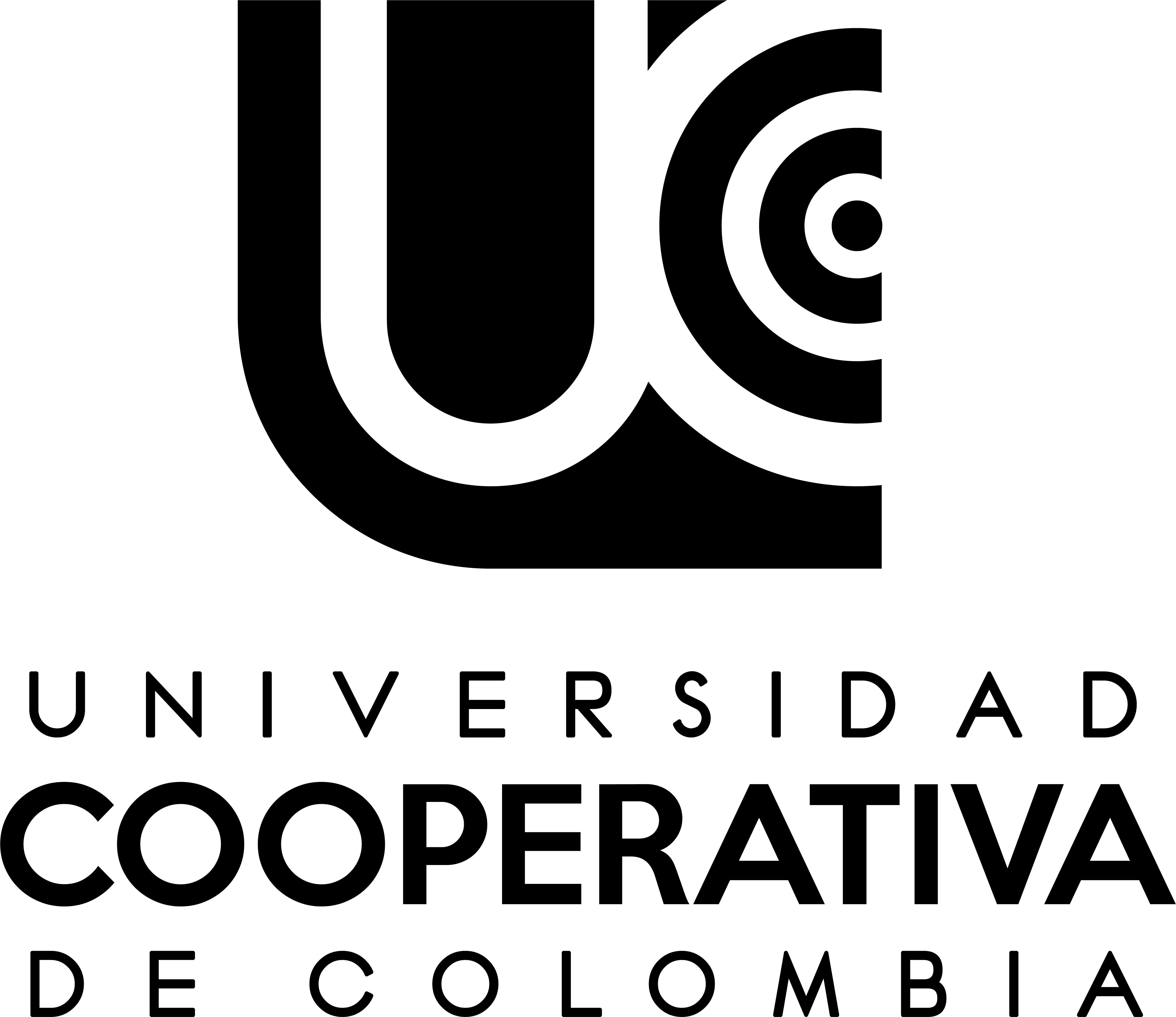La radiografía cefálica : más allá de una medida cefalométrica

Universidad Cooperativa de Colombia
Odon.
email: revista.odontologia@ucc.edu.co

Universidad Cooperativa de Colombia
email: revista.odontologia@ucc.edu.co

Universidad Cooperativa de Colombia
Odon. Ortod.
email: revista.odontologia@ucc.edu.co
La práctica ortodóncica reconoce la importancia de la radiografía cefálica lateral, aunque en realidad la limita a un análisis cuantitativo, por lo cual se realizó una revisión de literatura con el fin de valorar las características morfológicas que a simple vista pueden ser evaluadas en la radiografía y que son herramientas para predecir factores de riesgo, pronóstico y estabilidad. Se concluye que la radiografía cefálica lateral da una visión más amplia de los patrones de crecimiento craneofacial, los cuales pueden ser modificados por diversas estructuras —como la base del cráneo, la postura craneocervical, las vías aéreas y la posición del hueso hioides, sin dejar de valorar las vértebras cervicales y la morfología de la sínfisis mandibular— que se constituyen en factores diagnósticos importantes en el momento de tomar decisiones clínicas. Por tanto, la radiografía cefálica lateral brinda información cualitativa importante que no se puede obviar y que permite llegar a un diagnóstico más acertado.
Solow B, Siersbaek-Nielsen S. Cervical and craniocervical posture as predictors of craniofacial growth. Am J Orthod Dentofacial Orthop. 1992; 101(5): 449-58.
Wilhelm BM, Beck FM, Lidral AC, Vig KW. A comparison of cranial base growth in Class I and Class II skeletal patterns. Am J Orthod Dentofacial Orthop. 2001; 119(4): 401-5.
Henneberke M, Prahl-Andersen B. Cranial base growth for Dutch boys and girls: a multilevel approach. Am J Orthod Dentofacial Orthop. 1994; 106(5): 503-12.
Dhopatkar A, Bhatia S, Rock P. An investigation into the relationship between the cranial base angle and malocclusion. Angle Orthod. 2002; 72(5): 456-63.
Hopkin GB, Houston W, James GA. The cranial base as an aetiological factor in malocclusion. Angle Orthod. 1968; 38(3): 250-5.
Ford MD. Growth of the human cranial base. Am J Orthodontics. 1958; 7(44): 498-506.
Malta LA, Ortolani CF, Faltin K. Quantification of cranial base growth during pubertal growth. J Orthod. 2009;
(4): 229-35.
Lei WY, Wong RW, Rabie AB. Factors regulating endochondral ossification in the spheno-occipital synchondrosis. Angle Orthod. 2008; 78(2): 215-20.
Björk A. Cranial base development. The Eleventh International Dental Congress Scientific Section. London July 19 to 26 1952.
Latham RA. The sella point and postnatal growth of the human cranial base. Am J Orthod. 1972; 61(2): 156-62.
Ruiz AJ, Canseco J, Cuairán V. Relationship between cranial base flexure and skeletal class. Rev Odont Mex. 2011;.15(4): 214-8.
Andria LM, Leite LP, Prevatte TM, King LB. Correlation of the cranial base angle and its components with other dental/skeletal variables and treatment time. Angle Orthod. 2004; 74(3): 361-6.
Proff P, Will F, Bokan I, Fanghanel J, Gedrange T. Cranial base features in skeletal Class III patients. Angle Orthod. 2008; 78(3): 433-9.
Klocke A, Nanda RS, Kahl-Nieke B. Role of cranial base flexure in developing sagittal jaw discrepancies. Am J Orthod Dentofacial Orthop. 2002; 122(4): 386-91.
Anderson D, Popovich F. Correlations among craniofacial angles and dimensions in Class I and Class II malocclusions. Angle Orthod. 1989;.59(1):.37-42.
Pachi F, Turla R, Checchi AP. Head posture and lower arch dental crowding. Angle Orthod. 2009; 79(5): 873-9.
Garcia de Paula e Silva FW, Mussolino de Queiroz A, Díaz KV . Posture alterations and consequence to stomatognatic system. Acta Odontol Venez. 2008; 46(4): 1-7.
Solow B, Sandham A. Cranio-cervical posture: a factor in the development and function of the dentofacial
structures. Eur J Orthod. 2002; 24(5): 447-56.
Solow B, Siersbaek-Nielsen S. Growth changes in head posture related to craniofacial development. Am J Orthod. 1986; 89(2): 132-40.
Cuccia AM, Lotti M, Caradonna D. Oral breathing and head posture. Angle Orthod. 2008; 78(1): 77-82.
Huggare J. Association between morphology of the first cervical vertebra, head posture, and craniofacial structures. Eur J Orthod. 1991; 13: 435-40.
Baydas B, Yavuz I, Durna N, Ceylan I. An investigation of cervicovertebral morphology in different sagittal skeletal growth patterns. Eur J Orthod. 2004; 26(1): 43-9.
Gu Y, McNamara JA. Mandibular growth changes and cervical vertebral maturation. A cephalometric implant study. Angle Orthod. 2007; 77(6): 947-53.
Franchi L, Baccetti T, Mcnamara J. Mandibular growth as related to cervical vertebral maturation and body heigth. Am J Orthod Dentofacial Orthop. 2000; 118: 335-40.
Baccetti T, Franchi L, Mcnamara J. The cervical vertebral maturation (cvm) method for the assessment of
optimal treatment timing in dentofacial orthopedics. Semin orthod. 2005; 11: 119-29.
Baccetti T, Franchi L, Mcnamara J. An improved version of the cervical vertebral maturation (cvm) method for the assessment of mandibular growth. Angle Orthod. 2002; 72: 316-23.
Gandini P, Mancini M, Andreani F. A comparison of hand-wrist bone and cervical vertebral analyses in
measuring skeletal maturation. Angle Orthod. 2006; 76(6): 984-9.
Lamparski D. Skeletal age assessment utilizing cervical vertebrae. [thesis]. Pittsburg: University of Pittsburg; 1972.
Fudalej P, Bollen AM. Effectiveness of the cervical vertebral maturation method to predict postpeak circumpubertal growth of craniofacial structures. Am J Orthod Dentofacial Orthop. 2010; 137(1): 59-65.
Soegiharto BM, Moles DR, Cunningham SJ. Discriminatory ability of the skeletal maturation index and the cervical vertebrae maturation index in detecting peak pubertal growth in Indonesian and white subjects with
receiver operating characteristics analysis. Am J Orthod Dentofacial Orthop. 2008; 134(2): 227-37.
Zhao XG, Lin J, Jiang JH, Wang Q, Hong S. Validity and reliability of a method for assessment of cervical vertebral maturation. Angle Orthod. 2012; 82(2): 229-34.
Carulla D, Espinosa D, Mesa T. Estudio cefalométrico del hueso hioides en niños respiradores bucales de 11 años (I parte). Rev Cubana Estomatol. 2008; 45(2): versión On-line.
Sheng CM, Lin LH, Su Y, Tsai HH. Developmental Changes in Pharyngeal Airway Depth and Hyoid Bone Position from Childhood to Young Adulthood. Angle Orthod. 2009; 79: 484-90.
Adamidis IP, Spyropoulos MN. Hyoid bone position and orientation in class I and class III malocclusions. Am J Orthod Dentofacial Orthop. 1992; 101: 308-12.
Pae EK, Quas C, Quas J, Garrett N. Can facial type be used to predict changes in hyoid bone position with age? A perspective based on longitudinal data. Am J Orthod Dentofacial Orthop. 2008; 134: 792-7.
Jena AK, Duggal R. Hyoid bone position in subjects with different vertical jaw dysplasias. Angle Orthod. 2011; 81(1): 81-5.
Yamaoka M, Furusawa K, Uematsu T, Okafuji N, Kayamoto D, Kurihara S. Relationship of the hyoid bone and posterior surface of the tongue in prognathism and micrognathia. J Oral Rehabil. 2003; 30(9): 914-20.
Kollias I, Krogstad O. Adult craniocervical and pharyngeal changes. A longitudinal cephalometric study between 22 and 42 years of age. Part II: Morphological uvulo-glossopharyngeal changes. Eur J Orthod. 1999;
(4): 345-55.
Phoenix A, Valiathan M, Nelson S, Strohl KP, Hans M. Changes in hyoid bone position following rapid maxillary expansion in adolescents. Angle Orthod. 2011; 81(4): 632-8.
Lin YC LH, Tsai HH. Changes in the Pharyngeal Airway and Position of the Hyoid Bone After Treatment with a Modified Bionator in Growing Patients With Retrognathia. J Exp Clin Med. 2011; 3(2): 93-8.
Graber LW. Hyoid changes following orthopedic treatment of mandibular prognathism. Angle Orthod. 1978; 48(1): 33-8.
Goncalves R de C, Raveli DB, Pinto Ados S. Effects of age and gender on upper airway, lower airway and upper lip growth. Braz Oral Res. 2011; 25(3): 241-7.
Martin O, Muelas L, Vinas MJ. Nasopharyngeal cephalometric study of ideal occlusions. Am J Orthod Dentofacial Orthop. 2006; 130(4): 436 e1-9.
Solow B, Skov S, Ovesen J, Norup PW, Wildschiodtz G. Airway dimensions and head posture in bstructive sleep apnoea. Eur J Orthod. 1996; 18(6): 571-9.
Gungor AY, Turkkahraman H. Effects of airway problems on maxillary growth: a review. Eur J Dent. 2009; 3(3): 250-4.
Ingman T, Nieminen T, Hurmerinta K. Cephalometric comparison of pharyngeal changes in subjects with upper airway resistance syndrome or obstructive sleep apnoea in upright and supine positions. Eur J Orthod. 2004; 26(3): 321-6.
Behlfelt K, Linder-Aronson S, McWilliam J, Neander P, Laage-Hellman J. Dentition in children with enlarged
tonsils compared to control children. Eur J Orthod. 1989; 11(4): 416-29.
Aki T, Nanda RS, Currier GF, Nanda SK. Assessment of symphysis morphology as a predictor of the direction of mandibular growth. Am J Orthod Dentofacial Orthop. 1994; 106(1): 60-9.
Mangla R, Singh N, Dua V, Padmanabhan P, Khanna M. Evaluation of mandibular morphology in different facial types. Contemp Clin Dent. 2011; 2(3): 200-6.
Gracco A, Luca L, Bongiorno MC, Siciliani G. Computed tomography evaluation of mandibular incisor bony support in untreated patients. Am J Orthod Dentofacial Orthop. 2010; 138(2): 179-87.
El autor debe declarar que su trabajo es original e inédito y que no se ha postulado a evaluación simultánea para su publicación por otro medio. Además, debe asegurar que no tiene impedimentos de ninguna naturaleza para la concesión de los derechos previstos en el contrato.
El autor se compromete a esperar el resultado de evaluación de la Revista Nacional de Odontología, antes de considerar su presentación a otro medio; en caso de que la respuesta de publicación sea positiva, adicionalmente, se compromete a responder por cualquier acción de reivindicación, plagio u otra clase de reclamación que al respecto pudiera sobrevenir por parte de terceros.
Asimismo, debe declarar que, como autor o coautor, está de acuerdo por completo con los contenidos presentados en el trabajo y ceder todos los derechos patrimoniales, es decir, su reproducción, comunicación pública, distribución, divulgación, transformación, puesta a disposición y demás formas de utilización de la obra por cualquier medio o procedimiento, por el término de su protección legal y en todos los países del mundo, al Fondo Editorial de la Universidad Cooperativa de Colombia, de manera gratuita y sin contraprestación presente o futura.
Artículos más leídos del mismo autor/a
- Ana María Quintero, Carolina García, Control de la higiene oral en los pacientes con ortodoncia , Revista Nacional de Odontología: Edición especial en Ortodoncia









